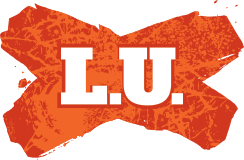I think it also describes Anthony Whatmough, Glen Stuart, Wade Graham, Greg Bird, John Sutton.
Well I don't think it does. Just having a passing game and wearing jersey 11, 12 or 13 isn't the same thing. Especially because all those blokes play on the edges (except Watmough who used to up until 2011).
There are (and always have been) different types of players in every position. Different hookers, different second-rowers, different halves, different five-eights, different fullbacks. Do we want to invent two or three different names for a five-eight simply because there are two or three different types of them?
It's not the type of player at the position, it is the actual
role played by the player. A 'lock' who gets 20 touches and makes 20 runs in 60 minutes is not playing the same role as the 'lock' who gets 30 touches and makes only 10 runs in the same period of time.
If the coach has told them both to take the third tackle hit up on every set and one of them is passing two thirds of the time then he is not playing the role his coach wants and he will get rissoled quick smart.
If we did that for every position we'd have about thirty different positions.
We would, which is why we need only do it for the three players collectively known as 'middle forwards'. because plenty of people still think there are two 'props' and a 'lock' and no other variations (or questions) are possible.
I know things have changed. The centre role is a lot different now, since they are mostly on opposite sides of the field. And we've gone from unlimited tackles to four tackles and to six tackles. And now we have scrums that aren't a contest; play the balls that are rarely a contest; hookers who don't hook; props who don't prop, etc. There have been a lot of changes over the time I've been watching Rugby League. But my point, basically, when I talk about tradition, is that a lot of the roles, stuctures, styles of play, what have you, that are around today - and people think are a modern invention - are really just a resurrection or slight variation on things that have been around for a very long time. And I do like the traditional names of positions. In thirty years time, when there is no longer any distinction between backs and forwards and every player is the same size and shape, you might look back nostalgically on your 'middle forwards' and 'edge forwards' and left and right halves, Pou.
I'm not big on tradition mate. In fact I think it hurts discussion and understanding of the modern game. An example is when people say Sandow is shit because he can't 'lead a team around the park' because that's apparently what 'the halfback' does. Corey Norman already said it's his job to 'lead the team around the park' and Sandow is to play what he sees. So clearly either Norman is the 'halfback' despite his jersey number, or it isn't the job of the 'halfback' to 'lead the team around the park'. Regardless, the old way of looking at a 'halfback' and his role has led to criticism of Sandow that was rendered demonstrably wrong by his performance in Dally M voting this year.
And I'm aware that there have been 'organising' five-eighths prior to Corey Norman, which is just my point - 'halfback' and 'five-eighth' are poor labels because they make a false or inaccurate distinction between two more or less interchangeable positions (left and right half). Obviously some left and right halves handle the ball far more often than their halves partner, but the jersey number appears to say very little about who is more dominant or how they play their role.
Anyway, I love watching how the game evolves, but the straitjacket of the game's language does plenty to hide the evolution of the game, and lose many of the changes - back and forth through different trends - from history.
